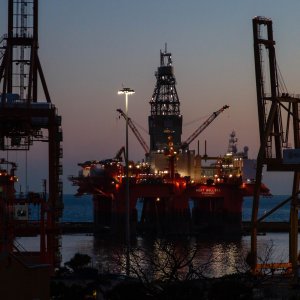
Round Zero Highlights
As part of the Energy Reform, PEMEX was given a right of preference over other oil companies that are interested in exploration and production in Mexico. Countries that have undergone similar liberalization processes, such as Norway, Brazil, and Colombia, have followed procedures similar to Mexico’s Round Zero. In these cases, the state-owned company was given the opportunity to consolidate as the leading oil company in the country, but it could also form partnerships or concede fields and exploration areas. In Norway, Brazil, and Colombia this strategy has yielded positive results as their state-owned companies have transformed themselves into globally competitive players. This situation led to an increase in overall production, with bids being received for the fields and areas surrendered by the NOCs. This additional investment allowed these countries to push the boundaries of their oil production-possibility frontiers, reduced the geological risk of previously unexplored areas, and increased proven oil and gas reserves. The legal basis for Round Zero comes from the definition of the 6th Transitory Article of the Constitutional Amendment on Energy approved in December 2013. The article states that PEMEX has 90 days from the Energy Reform coming into effect to deliver a proposal on which exploration areas and producing fields it would like to keep. The proposal had to include the technical, financial, and operational backing to justify why PEMEX believes it could manage those areas in an efficient and competitive manner. PEMEX submitted this document on March 21, 2014, to Mexico’s Energy Ministry (SENER), which was given 180 days to evaluate this proposal and decide which fields and areas will be assigned to PEMEX by September 17, 2014. The 6th Transitory Article provides clear guidelines on how SENER should assess PEMEX’s proposal, also arming them with CNH’s technical assistance for an easier evaluation of the fields’ characteristics.
PEMEX’s ROUND ZERO PROPOSAL
PEMEX’s request was founded on the provisional reserves and prospective resource figures prepared for 2014. According to these figures, PEMEX has 112.8 billion boe in prospective resources and 43.8 billion boe in 3P reserves. Around 70% of the prospective resources, representing 88 billion boe, are located in deepwater or are unconventional resources. Given that the NOC has managed a number of commercial discoveries in both segments, deepwater and unconventional 2P reserves amount to 400 million boe, while 3P reserves total 2.2 billion boe. Gustavo Hernández García, Acting Director General of PEMEX E&P, outlined that conventional shallow water 2P reserves total 12.5 billion boe, while 3P reserves stand at 17.3 billion boe. In conventional onshore areas, 2P reserves amount up to 11.9 billion boe and 3P reserves to 24.3 billion boe. The technical part of the proposal explains that PEMEX has mastered production technologies and techniques for the conventional shallow water and onshore activites.
EXPLORATION
PEMEX divided its exploration proposal in three heterogeneous clusters, characterized by the homogeneous characteristics of the fields each includes. The first cluster comprises fields which present low geological and technical risk. It includes exploration areas that are close to already built infrastructure, such as those in Burgos, Llave, Comalcalco, Cuichapa, and Eastern Campeche. The second cluster covers known oil regions that are yet to be developed but hold promising potential, including Chalabil, Uchukil, Holok, Alosa, and Perdido. This cluster is defined as presenting medium geological and technical risk. The third cluster covers oil regions where the presence of hydrocarbons has not been proven yet, which are described as presenting varied geological and high technical risk. This cluster comprises Pakal, Han, and Tlancanan, as well as known shale areas.
In total, PEMEX requested 30.7% of the country’s prospective resources, which amounts to 34.5 billion boe, in its exploration proposal. PEMEX is asking for 25.6 billion boe (48.7%) of conventional resources and 8.9 billion boe (14.8%) of unconventional resources.
“70% of total prospective resources are deepwater and unconventional resources; their development is the next step in the technical and strategic evolution of PEMEX. We are not requesting all of the areas in the deepwater basins, since PEMEX also has a vested interest in leaving some space for private investment to contribute with the growth of the Mexican oil and gas industry,” says Gustavo Hernández García, Acting Director of PEMEX E&P.
The primary consideration used to determine which exploration areas to request was the continuity of PEMEX’s exploration strategy. Other factors considered included the potential hydrocarbons content and expected monetary value of the areas, as well as the technical and geological risks involved. PEMEX’s proposal grouped the exploration areas that it requested according to the following criteria:
-
Conventional Onshore Areas: PEMEX requested areas in which oil discoveries could be developed within a short amount of time, ideally less than 12 months, and gas areas that are expected to be profitable in the medium-term. It intends to pursue partnerships with the private sector in these areas only where necessary to mitigate risks and increase operational capacity
-
Shallow Water Areas: PEMEX requested areas with oil opportunities and existing infrastructure that would allow for discoveries to be developed quickly. Given the company’s experience in shallow waters, it does not expect to involve partners from the private sector in connection with these areas
-
Deepwaters Areas: PEMEX requested areas with potential commercial opportunities in which it expects to be able to enter into partnerships with private sector companies. These partnerships would help the Mexican NOC to share the risks and costs associated with deepwater operations and facilitate the transfer of technology and expertise
-
Unconventional Areas: PEMEX requested areas with potential commercial to develop in partnerships with the private sector that will help the company develop the technological capacity to exploit shale and other unconventional deposits in the future
PRODUCTION
With respect to production activities, PEMEX requested the right to continue operating its most profitable fields to maintain production. It also requested the right to continue developing complex and capital-intensive areas, such as deepwater fields, which the company’s main officials believe it can successfully operate by entering into strategic partnerships with the private sector. Altogether, PEMEX requested the right to continue operating all of the fields that are currently in production, as well as many of the fields that are being developed or are close to being developed. All of these fields total 83.1% of total 2P reserves (20.6 billion boe), and 71.5% of total 3P reserves (31.3 billion boe).
















